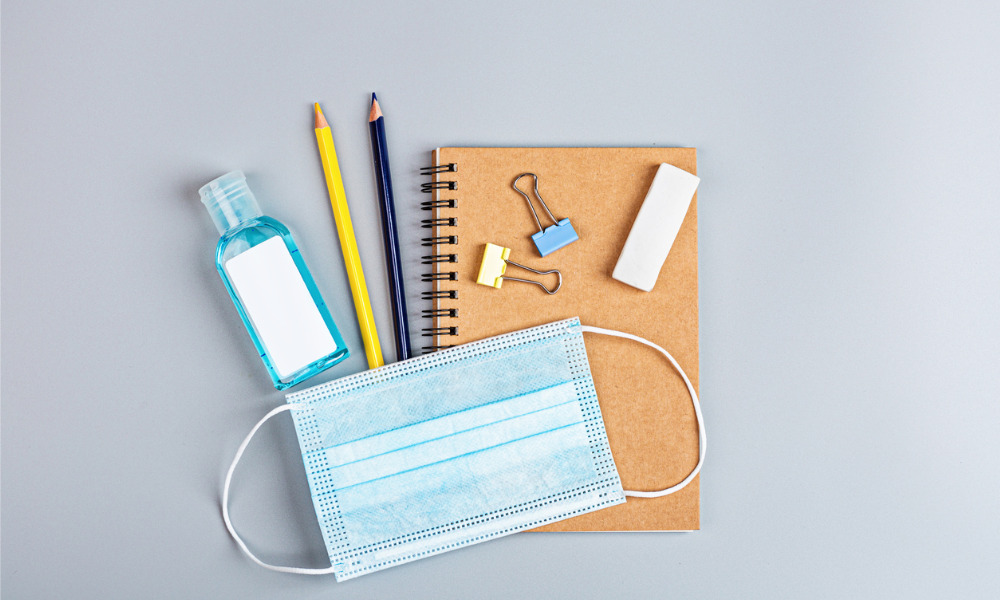A look at new measures being implemented across Canada, current outbreaks and #SafeSeptember

With schools reopening around the country, “back to school” has been dominating the news cycle. Last week, the federal government announced that it would be allocating $2 billion to help provinces safely reopen schools.
New measures
For most provinces, schools aim to reopen with a mix of in-person and online classes. This new system will affect the size and number of in-person classes. Indeed, in Ontario, Cathy Abraham, president of the Ontario Public School Boards' Association, said that schools will have to collapse and combine classrooms to account for the number of students who will be taking online classes: “We are aware of situations in the province where classes are being collapsed. If they're being collapsed it is because of a need to fulfil ministry directives and parents should check with their school boards if they have concerns about their own children's class size.” She said on Tuesday.
Most other provinces will also be offering a mix of online and in-person classes to students. Other measures that are broadly similar across different provinces include PPE for staff and students (masks, face shields), staggered breaks, updating HVAC systems and increased sanitization. Many schools across Canada will implement “cohorts”: learning groups or bubbles of students who will be grouped together to minimize the risk of viral spread.
In B.C., the Vancouver School Board will implement a new “Learn From Home Transition Program” which will allow students to retain their place in school, while working from home, with a view to transition back to in-person classes in the year.
School outbreaks
Schools have barely reopened yet some seem to already be facing issues.
In Alberta, a school in Okotoks (near Calgary) has decided to delay reopening after a staff member was diagnosed with COVID-19. This is not the only infection noted among schools in Alberta. Indeed, according to a report from The Canadian Press, the principal, assistant principal and administrative secretary of a school in Calgary were forced to quarantine for 14 days after someone at the school tested positive for the virus.
Alberta is not the only province facing a potential virus outbreak; in Quebec City, three cases of COVID-19 were found at two schools, forcing 80 students into isolation. It is not known whether those who tested positive were staff or students. Another four teachers at a French-language school in Montreal have also tested positive for the virus, forcing 20 other staff members to quarantine as well as some students.
Mask wearing
In a statement on Monday, Alberta’s premier Jason Kennedy said: “This week, schools begin reopening their doors under Alberta’s robust re-entry plan, which will allow our students and staff to return to school safely with important public health and safety measures in place. Among the many measures will be extra cleaning, distancing, cohorting and masking.”
In Alberta, mask wearing is compulsory for staff and students from grades 4 – 12. Faces must be covered in common and shared areas indoors (such as hallways). However, mask wearing will not be compulsory in classrooms, said Alberta’s chief medical officer Dr. Deena Hinshaw: “We were trying to balance the benefits and harms of masking and figure out how we could best achieve the most appropriate COVID prevention, while at the same time not impeding some of the important functions of school.”
British Columbia has also put into place a similar mask policy.
As well as Alberta and B.C., masks have been made compulsory in Ontario, Nova Scotia, Quebec and Manitoba. In Manitoba, the government has decided to expand its mask rules so that all students, drivers and other passengers on school buses will now have to wear a mask.
However, this is not the case in Saskatchewan. The province has decided to let schools boards decide on whether masks should be compulsory, with most schools divisions having decided to mandate mask wearing in schools.
#SafeSeptember
Groups across various provinces have called for better measures than those currently in place. Educators, unions and parents have voiced concerns over whether staff and students will be safe despite increased safety measures and government funding.
In Ontario, following the release of Ford’s “playbook” for school reopens, there has been major disagreement between the provincial government and major teachers’ unions, with some unions alleging that the government is breaking provincial OHS laws.
A coalition of parents, teachers and students have organized a movement in Ontario called Safe September (sharing on social media under the hashtag #SafeSeptember). The movement is calling for additional government funding to ensure a safe return to schools in the province.
The Ontario Liberal party has also launched an anonymous whistleblower website. Advocacy group Ontario Education Workers United has released a series of resources for schools including checklists and forms.





